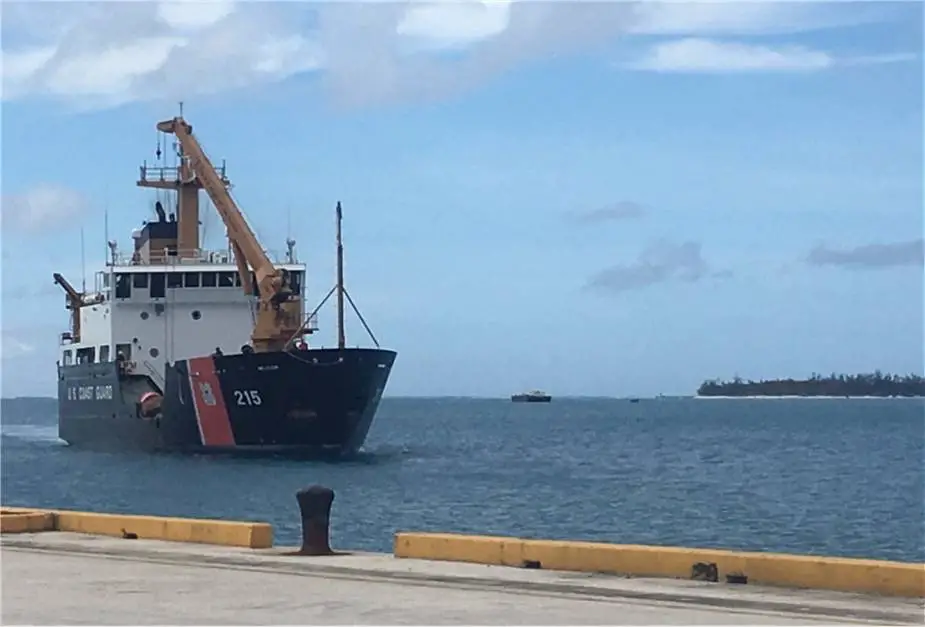The U.S. Coast Guard, in partnership with U.S. Embassy Koror and with the support of the Department of the Interior, provided further aids-to-navigation infrastructure improvements in the waters of Koror, Palau in late May and early June 2020.
The U.S. Coast Guard, in partnership with U.S. Embassy Koror and with the support of the Department of the Interior, provided further aids-to-navigation infrastructure improvements in the waters of Koror, Palau in late May and early June 2020.
Follow Navy Recognition on Google News at this link
 U.S. Coast Guard Cutter Sequoia (WLB 215) arrives in Saipan, Oct. 26, 2017. (Picture source U.D. DoD)
U.S. Coast Guard Cutter Sequoia (WLB 215) arrives in Saipan, Oct. 26, 2017. (Picture source U.D. DoD)
Over the last few weeks, The crew of the U.S. Coast Guard Cutter Sequoia (WLB 215) has established ten new floating aids to navigation known as buoys and established or substantially rehabilitated 43 fixed aids to navigation in Palau’s main shipping channel. This work took place in Toachel Mlengui – the West Passage, Malakal Harbor, where the commercial port is located, and Malakal Pass.
USCGC Sequoia (WLB-215) is a United States Coast Guard 225-foot Seagoing Buoy Tender, homeported in Apra Harbor, Naval Base, a deep-water port on the western side of the United States territory of Guam. The primary mission of the Cutter is to maintain aids to navigation in Guam and the Northern Marianas. As with all Coast Guard Cutters, she functions as a multi-mission asset, responsible for marine environmental protection, search and rescue, law enforcement, and Homeland Security missions.
In order to safely conduct these operations in a COVID environment, the Coast Guard and Embassy worked closely with the government of Palau to meet stringent quarantine requirements. Prior to sailing from Guam, the crew of Sequoia sequestered themselves aboard the ship for 14 days before entering Palauan waters. Each of the 50 crew also tested negative for the illness. All precautions were coordinated with and ultimately approved by Palau’s Emergency Operations Committee.
The navigation aids exist at various points along the coast and navigable waterways as markers and guides to enable mariners to determine at all times their exact position with relation to land and to hidden dangers. Palau is a collection of volcanic islands with uplifted reef structures of coral and limestone at sea level. Palau also receives up to 160 inches of rain per year, which can impede visibility. The aids enable maritime commerce by helping mitigate these navigation challenges.
This work follows improvements made in May 2019, in support of maritime safety and security development. The crew set four buoys marking the main waterway in the Port of Koror officials from Palau's Ministry of Transportation aboard to observe and participate in the operations. The effort is part of a longer-term effort to assess and improve Palau's maritime navigation system.
Commercial, military, and private vessels utilize the Port of Koror, a deep-water port that is essential to maritime commerce and U.S. defense readiness. The Republic of Palau consists of 340 islands, with a population of more than 22,500 people. Infrastructure improvement is but one of many areas of collaboration that the U.S. and Palau enjoy under the Compact of Free Association relationship. The Sequoia is a 225-foot seagoing buoy tender homeported in Guam.







